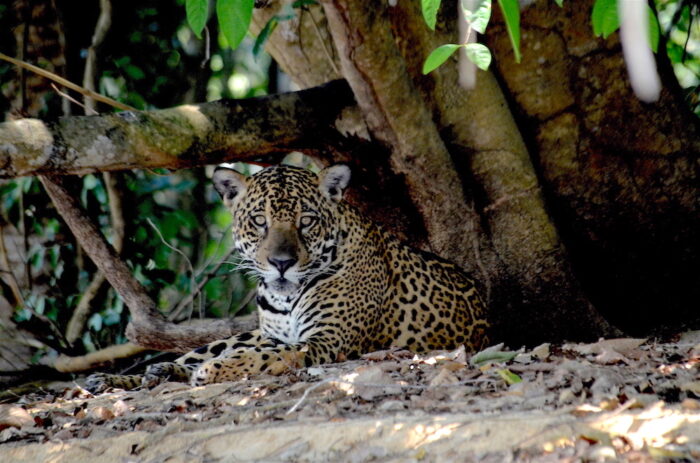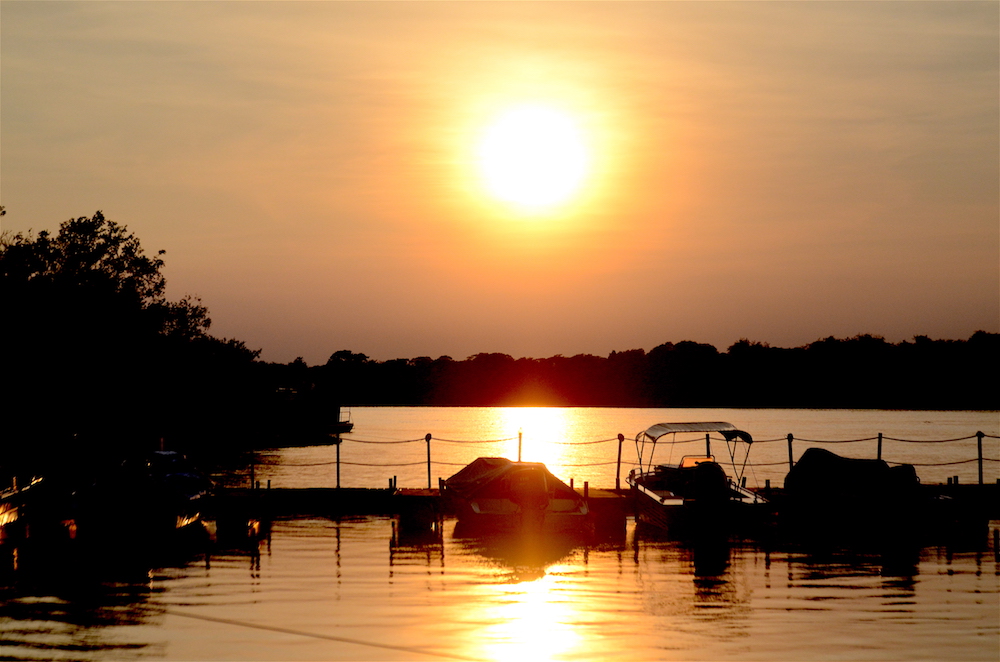
Such is the diversity and sheer magnificence of the Pantanal, that even after returning to the daily grind for over three weeks now, the enduring wilderness of the wetlands has not left me. Every time I look at the photographs or simply browse through my field notes, I am transported back to the ‘whirr’ of the speed boat (Pantanal has boat safaris owing to the thick forests that make conventional land safaris almost impossible), and the choppiness of the stunning Cuiaba River that winds its way through the Pantanal. The Cuiaba is flanked by curtain-like thick forests on both banks, which is dramatically parted once in a while by a curious or a hunting jaguar, sun bathing caimans, jumpy capybaras or even the tall and intimidatingly beautiful Jabiru stork.
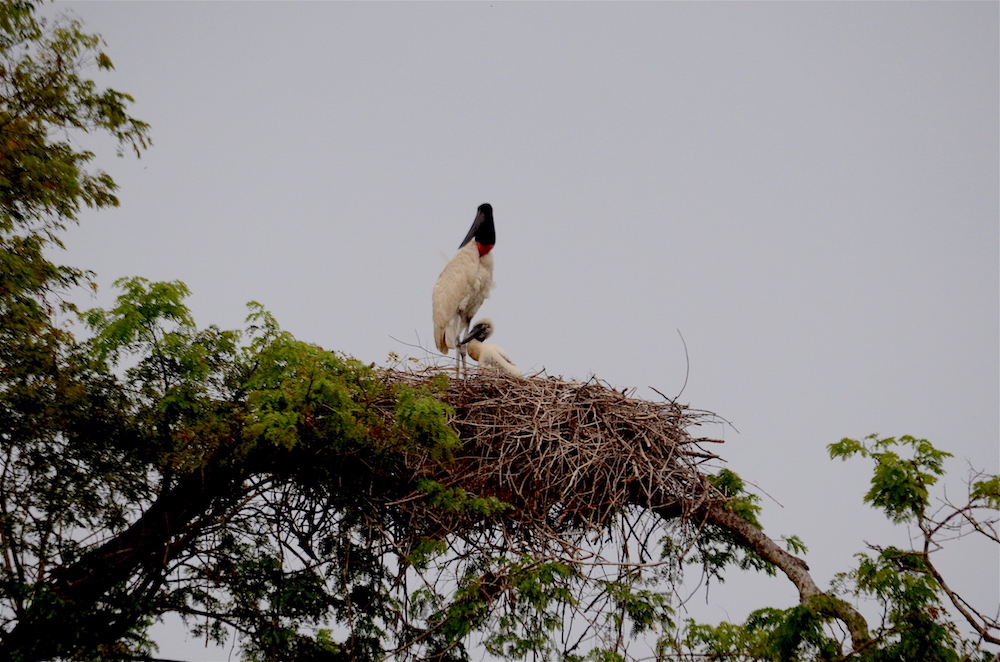
A good 5-6 hour drive from Cuiaba airport, the approach to the Pantanal is through the Transpantaneira Road, which is little more than a mud track. However, it offers a sneak peek into the natural life that exists in this part of Brazil, as it is dotted with water bodies on either side of the road full of hyacinth, a perfect place to look out for caimans (as I would discover over time ). As we moved slowly with our faces plastered to the car windows, determined not to miss anything, I nearly jumped out of the moving vehicle when I spotted my first caiman sporting an unbelievable shade of green, only to be further startled by the sight of a Giant ant-eater prancing gracefully across a grassy patch like a lady in a ball gown. Once our excitement died down, we were treated to a huge colony of storks and egrets dotting the trees in different shades of white. Driving further down, leaving behind the cacophony of the birding site, we braked suddenly for the sight of a golden rope sliding across the road. ‘Succuri’ yelled the driver as we struggled to recover from the sudden stop and the rapid Portuguese.
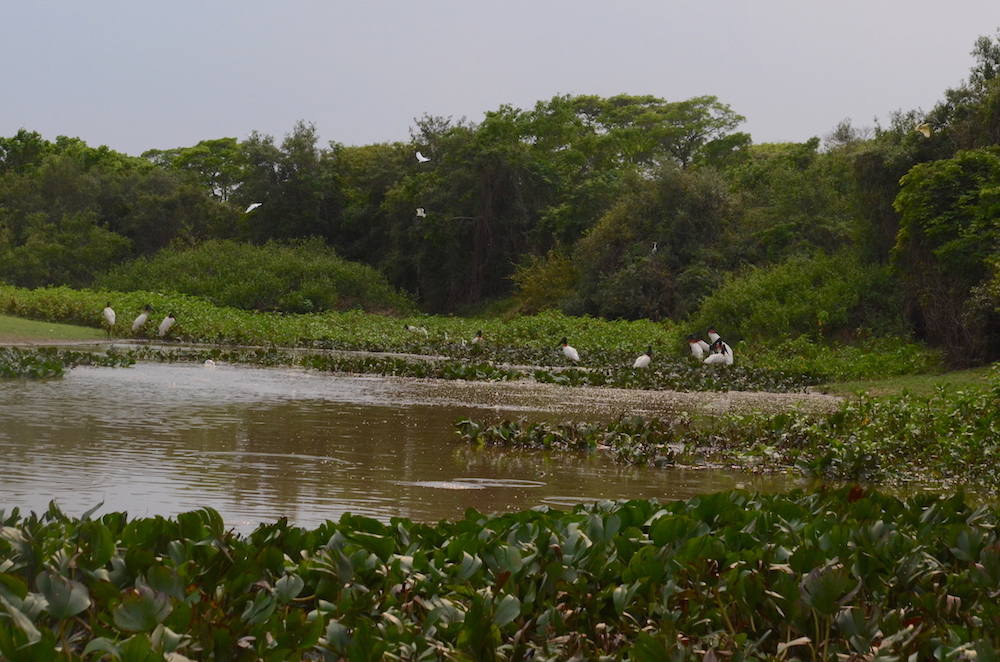
Running out of the vehicle, we chased the commotion to spot a beautiful Yellow anaconda slithering away rapidly, glinting brilliantly in the mid-day sun. Clapping his hands with self-congratulatory delight, the driver boasted about his luck with anacondas while we were in various states of disbelief that we had actually seen an anaconda so soon. It is a stunning looking snake, patterned in vivid yellow and black, much like the jaguar.
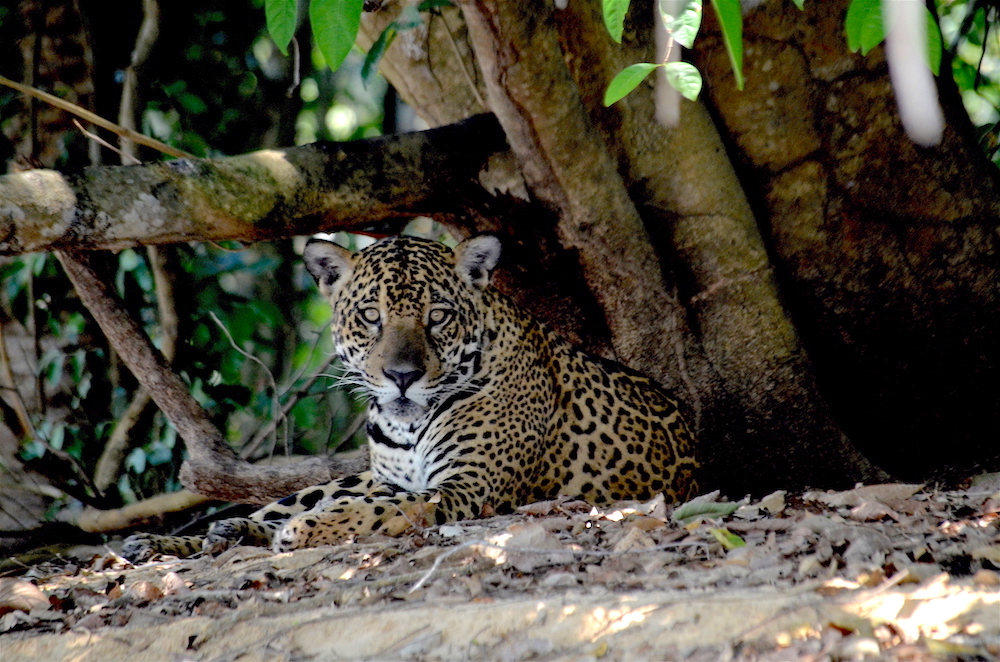
The Pantanal is not only an exceptionally bio-diverse region (a discovery we made within minutes of entering the wilderness) but an animal sensitive area too. With toucans, chachalacas, carcaras, Hyacinth macaws, and Black vultures roaming the grounds of our resort with abandon, you can sense how wildlife, be it only birds, has been given their right to exist without stress, despite being present in a human populated landscape. The protocol of the Pantanal is disciplined. Even on the river, once a jaguar is sighted, no one shouts or jostles the neighbour for a better look at the cat or for a better spot (a welcome change from the mass hysteria seen at cat destinations in India. People are patient, the cat is obliging and life goes on as smoothly as a capybara swimming across the water channel.
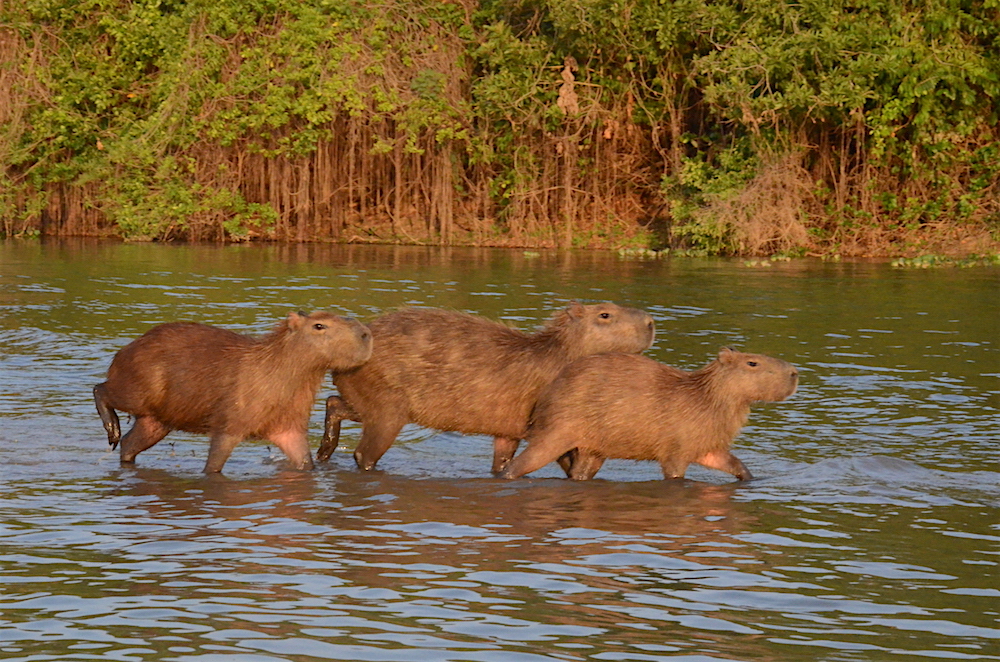
It is this relatively stress-free existence between the observer and the observed that immensely makes for a fantastic wildlife experience. Another excellent model in place at the Pantanal is the fitting of radios in the boats, so that other tourists can be informed in the event of a jaguar sighting.
Owing to a relaxed audience and a first-rate wildlife sensitive model in place, we had the fortune to see as many as 15 individual jaguars during our two weeks in the Pantanal.We could also unhurriedly observe cat behaviour like their hunting patterns (sometimes spending close to 4 hours watching them hunt) as they walk on the river bank hunting caiman, systematically checking every hyacinth clump for the glimpse of the reptile. We heard capybaras issue alarm calls, which sounds like a dog with a very bad cold, watched jaguars chase caimans, sighted armadillos watching us from the safe confines of their den, traversed the most beautiful of rivers, braved rain and cold weather while watching a jaguar hunt and drag a capybara across a beach in torrential rain, stared at mating jaguars on a cold, dark evening till dusk enveloped them, recoiled to the haunting call of the Howler monkeys, raced into the most beautiful of sunrises and sunsets, spotted birds with the most colorful of plumages, watched river otters communicate over a log full of fish and marveled at bats picking off insects from the surface of the water, which by late evening reflected unimaginable hues of purple, yellow and blue from the fast darkening sky.
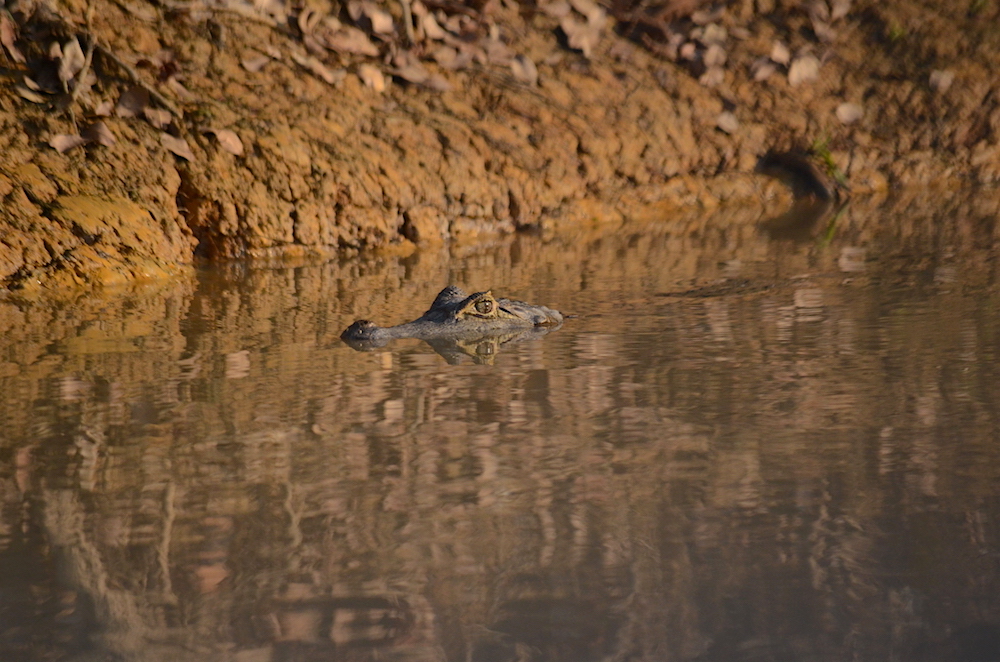
A landscape which now boasts of nearly 2000 jaguars, the population of cats in this region is said to be relatively safe with the killing of jaguars as a measure of either revenge killing (by ranch owners) or poaching having reduced over the years.
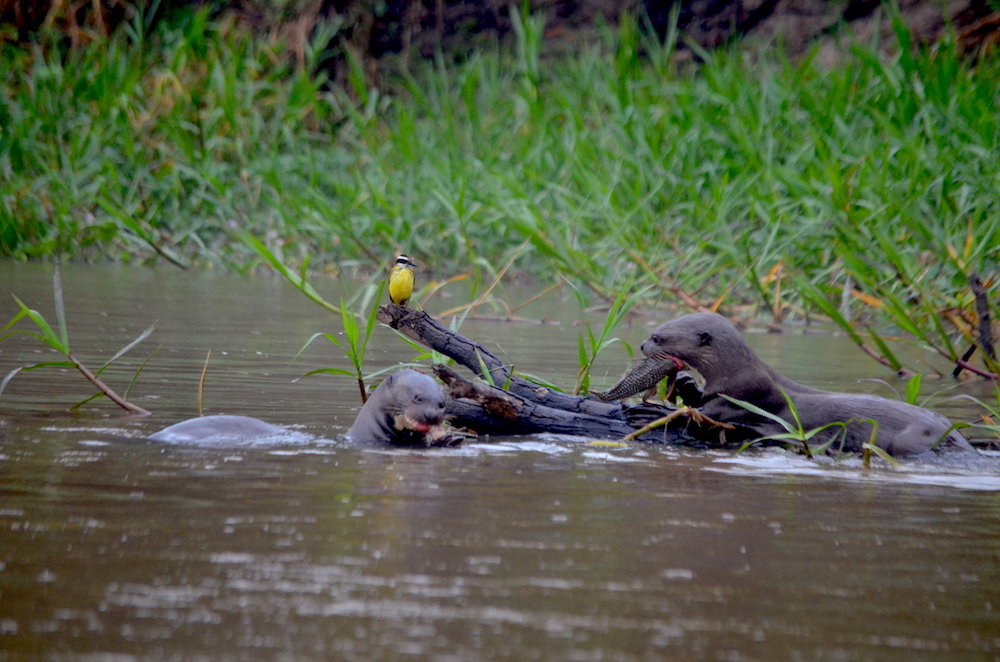
Thought to be the ultimate phantom of the South American wilderness, jaguar have been increasingly visible over the last eight years, existing mostly as myths and fleeting mirages before that. As I rewind my memory to the trip, I feel that the most memorable of sightings was when a female jaguar decided to pay us a visit at the resort. We got called out one day to see a stunning female sitting imperiously on a walkway built to observe birds, looking down into the water below for a chance to pounce on any unsuspecting caiman. Undeterred by our presence, she ignored us and soon melted away ‘caiman less’ into the dark forest while we juggled with varying degrees of euphoria.
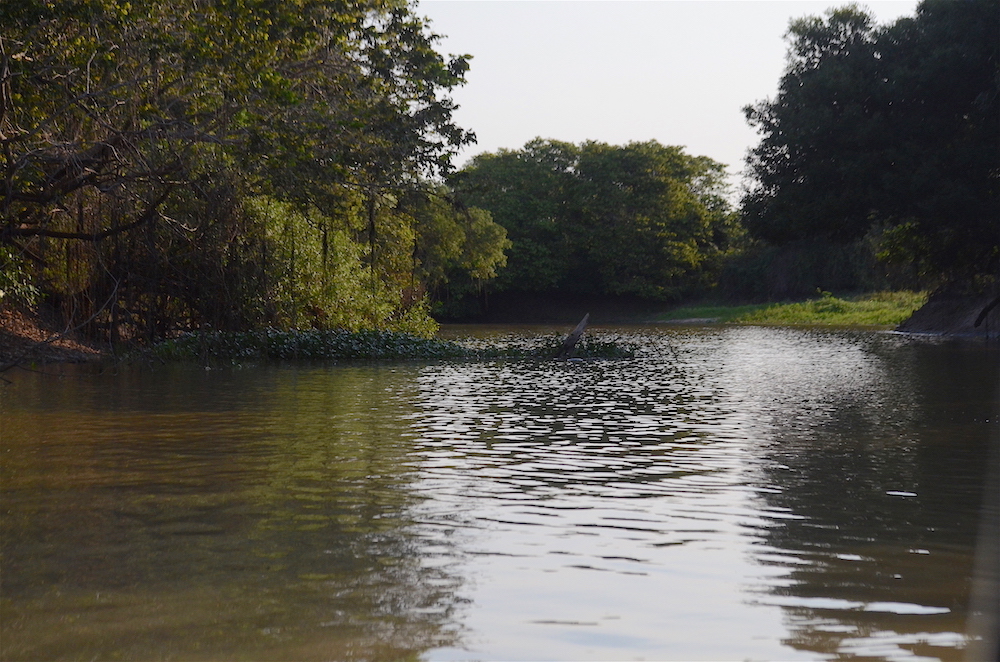
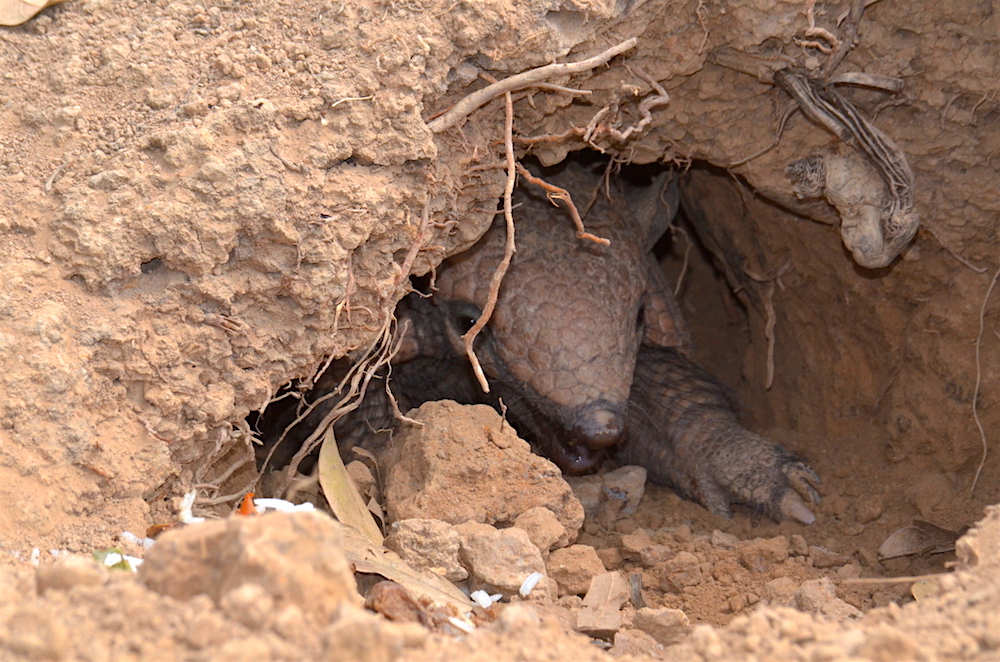
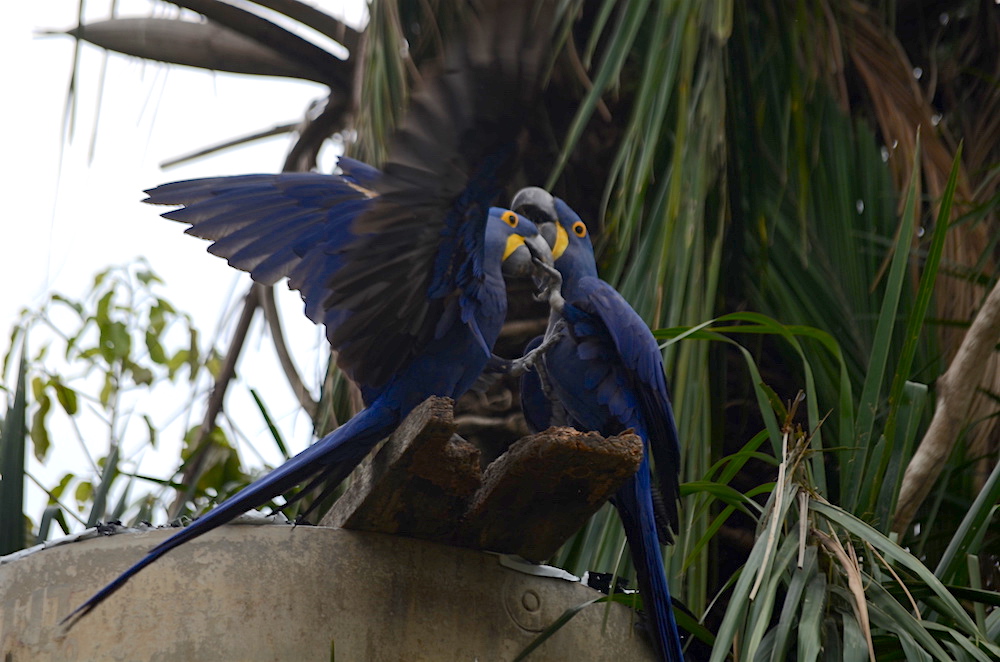
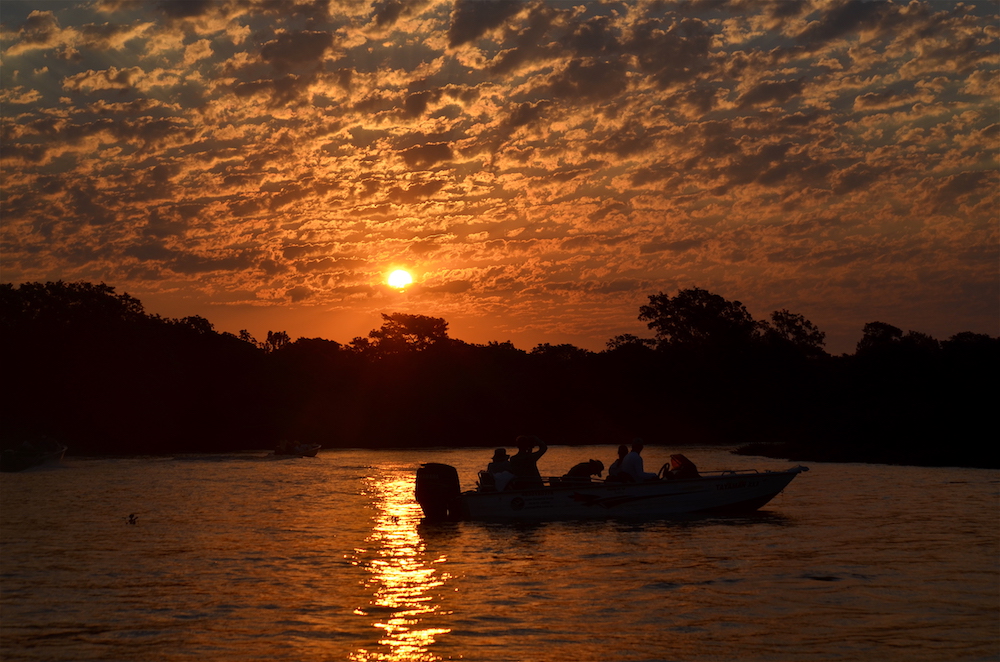
The Pantanal is a haven for cat and bird enthusiasts alike. Not to speak of those who love flora. Sail on the Cuiaba, track the spots, and every time you find yourself drifting into a peaceful mid-summer slumber, slip your hand into the refreshingly cold water for a wingless flight back to the magic that is the Pantanal.
